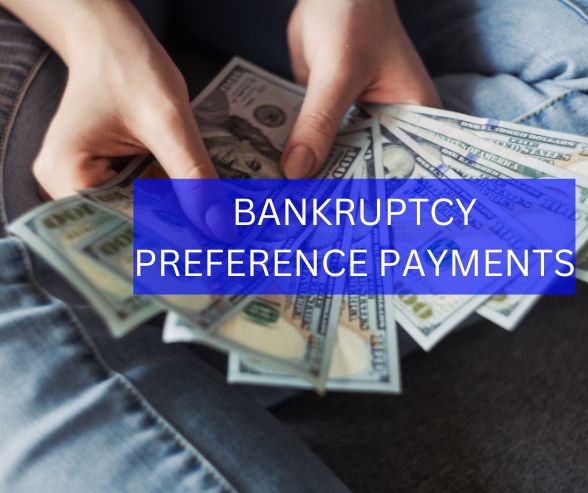A preference payment is a payment that you made to the creditor shortly before you filed for bankruptcy. In case the amount you paid is more than the amount the creditors are entitled to receive after bankruptcy, the bankruptcy trustee can void the payment. This means the trustee can recover the money or property from the creditor you paid.
The law refers to this as a clawback. But “clawback” actions are not that common. Since not all payments made before bankruptcy qualify as preference payments, you need to do the following:
Bankruptcy Preference
Understanding Preferential Payments In Bankruptcy
 Not all payments a debtor makes to a creditor before bankruptcy is a preferential payment. It is only a preferential payment if it is more than what the creditor will be entitled to get in the bankruptcy case.
Not all payments a debtor makes to a creditor before bankruptcy is a preferential payment. It is only a preferential payment if it is more than what the creditor will be entitled to get in the bankruptcy case.
The bankruptcy trustee is likely to “clawback” these payments because they often favor one creditor over other creditors in the bankruptcy case.
The trustee assigned to your bankruptcy case only becomes aware of these payments if you include them in your bankruptcy paperwork. It is the bankruptcy trustee’s responsibility to review the paperwork to find any indication of preference payments.
The trustee will instruct the creditor to return the payments if the trustee finds any preference payment violations in the bankruptcy paperwork.
Bankruptcy Clawback Period
How Far Back In Time Can the Trustee Look to Recover A Preferential Payment?
90 DAYS AND POSSIBLY ONE YEAR FOR “INSIDER CREDITORS”
The Trustee can look 90 days back in time to recover a preferential payment. Any payments you make to a creditor 90 days before you file for bankruptcy are preferential payments.
Insider Creditor Definition
The preference period extends to one year before you file for bankruptcy if the creditor is an “insider”. Creditors that qualify as insiders include:
- Your relatives
- A general partner
- Relatives of a general partner
- Coworkers
- Neighbors
- Family
- Friends
- Other people that have a special relationship with you
Are You Required To Report Preferential Payments
Debtors have to report preferential payments but the payments you have to report depend on whether it’s a business or an individual filing for bankruptcy. Individual bankruptcy is for debtors that have consumer debts or debts that are related to personal and household expenses.
Business debts are debts that a business incurs as it engages in activities meant to generate profit.
Payments Reported By Individual And Business Bankruptcy Filers
Whether you are a business or an individual, you have to report payments made to insider creditors. The 90-day requirement applies to both individual and business filers in the following ways:
- Payments made to a creditor within the 90 days before filing bankruptcy: An individual has to report payments totaling $600 or more made to a single creditor. Businesses have to report payments totaling $7,575 or more made to a single creditor.
- Payments made to insiders within a year before filing: You or your business has to report these payments regardless of the amount.
Are Household Expenses Considered As Preferential Payment?
Payments made to cover basic living expenses are not considered preferential payments. That means that the bankruptcy trustee cannot unwind those kinds of payments. But you should not pay rent, support payments, utility bills, and other obligations months in advance.
You only need to pay what is currently due or else the trustee will clawback any amount paid that is over the required amount.